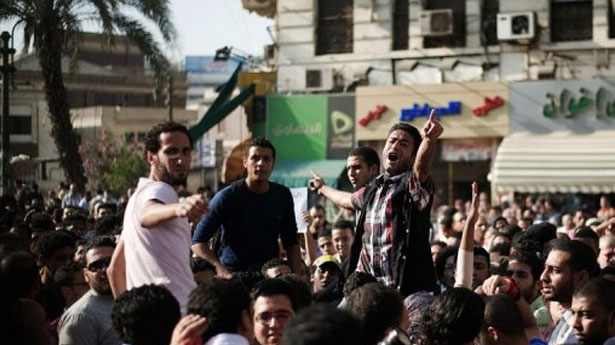Ever since they opened their political party program to public debate, the Muslim Brotherhood has been in crisis.
The reason behind this crisis is not only the strong criticism against suggestions to set up a “Religious Scholars Committee to monitor the legislative process, and the vague references to the equality and citizenship rights of Copts and women, but also the deep divisions within the leaders and members of the group concerning these vital issues, which was evident in contradictory statements they made in the past weeks.
This is not the first time the group suffers an internal crisis, but it’s the most poignant in the past decade, specifically since the 1996 crisis involving the Wasat Party youth, which led to a rift that left a wound that hasn’t healed to this day.
The crisis also comes at a time when the group lacks the charismatic leadership that could have absorbed and disposed of any negative repercussions that might have affected the group’s image, internally and externally.
There are three main facets to this crisis. First, there is the disagreement between the group’s leaders regarding controversial issues raised in the party program. A “weak current within the group requested reconsidering certain stances, offering a more lenient and flexible approach to the issue of Copts and women; while the stronger current holds on to its hard line approach. This latter current enjoys the privilege of being in a supervisory position in the organizational tier in the group’s decision-making structure, which is further confirmed by the successive statements of its icons.
Dr Mohamed Habib, first deputy to Supreme Guide Mohamed Mahdi Akef, Dr Mahmoud Ezzat, secretary general, and Dr Mohamed Morsy, head of the political bureau, show no signs of willingness to reconsider the group’s stance on these issues, despite the embarrassment they are causing.
It is not unusual for such a huge entity as the Brotherhood to include divergent points of view, but the current dilemma is in how to manage these differences in a way that does not undermine the group’s strength. Some members also try to exploit these differences for their own organizational gains, at the expense of the greater good.
Second, there are indications of a potentially fatal rift within the group, particularly at the top level. A “self-serving current tenaciously seeks to attain organizational leadership. This current exploits the power vacuum resulting from state security crackdown on the group’s frontline leaders who now face military trials, like Second Deputy and financier Khayrat El Shater.
This current uses several tools to reinforce its position, one of which is to unequivocally defend conservative points of view adopted by the old guard, especially regarding women and Copts. In order to marginalize the reformers from the decision-making circles, they engage in acute confrontations, intentionally embarrassing them, and accusing them of straying from the group’s core ideology.
Third, with their failure to deal with divergent views, the only way to contain the public exposure of the crisis within was to ban all reform-minded members from making any statements that would be appear to contradict the group’s general stance on controversial issues, opting instead for public statements by the conservatives.
The group also failed to manage the crisis raised by its political party program with the elite and the media. It was shaken by Essam El-Erian’s statements about the Brotherhood’s position vis-a-vis Israel. Disregarding whether or not his statements were true, the group simply aimed to distance themselves from El-Erian’s views to the detriment of their media image.
They would have gained more had they verified the validity of El-Erian’s statements and published a response from the Guidance Office about the group’s stance on Israel instead of outright discrediting him. Clearly, adding fuel to the fire must have worked in someone’s favor.
I don’t expect the Muslim Brotherhood to live through its current crisis without a significant loss of morale, growing dissonance within the group’s top leadership and a serious blow to the broader bases.
The Brotherhood is indeed at a crossroads, not only when it comes to modifying their intellectual and political discourse, which one cannot foresee in the short term, but also regarding the organizational polarization between the two rival currents within it. This will determine which way the scales will tip in the coming months.
Khalil Al-Ananiis an expert on Political Islam and Deputy Editor of Al Siyassa Al Dawliya journal published by Al-Ahram Foundation.

